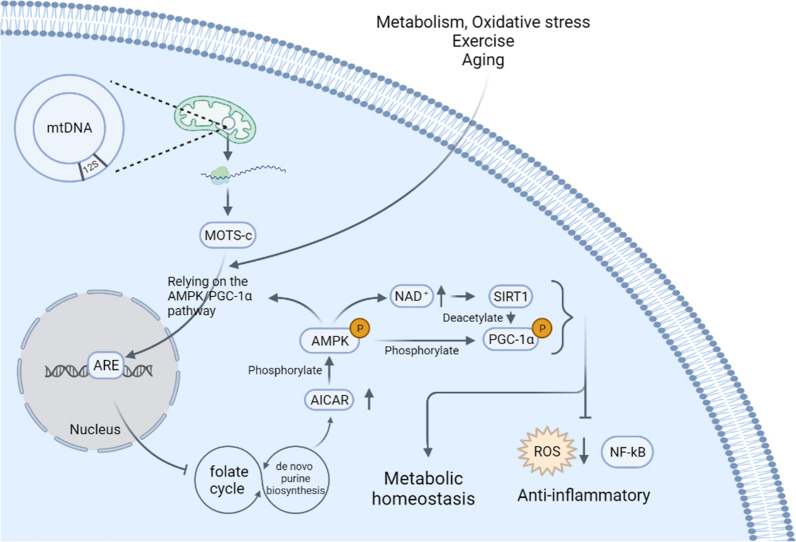Fig. 3.
Mechanism and function of MOTS-c. Short open reading frame on 12S rRNA of mitochondrial DNA transcribes mRNA in mitochondria. Subsequently, the mRNA translocates to the cytoplasm to translate MTOS-c. MOTS-c is triggered to translocate into the nucleus by stress, exercise and aging through the AMPK/PGC-1α-dependent pathway, thereby regulating the expression of genes with antioxidant response elements (ARE) and stress adaptation-related. MOTS-c can mainly regulate the folate cycle and de novo purine biosynthesis pathway, leading to an increase in AICAR, which phosphorylates and activates AMPK. AMPK can regulate energy homeostasis and produce anti-inflammatory effects by activating SIRT1 and PGC-1α (Phosphorylation and deacetylation). In addition, AMPK can promote nuclear translocation of MOTS-c, forming a feedback loop

